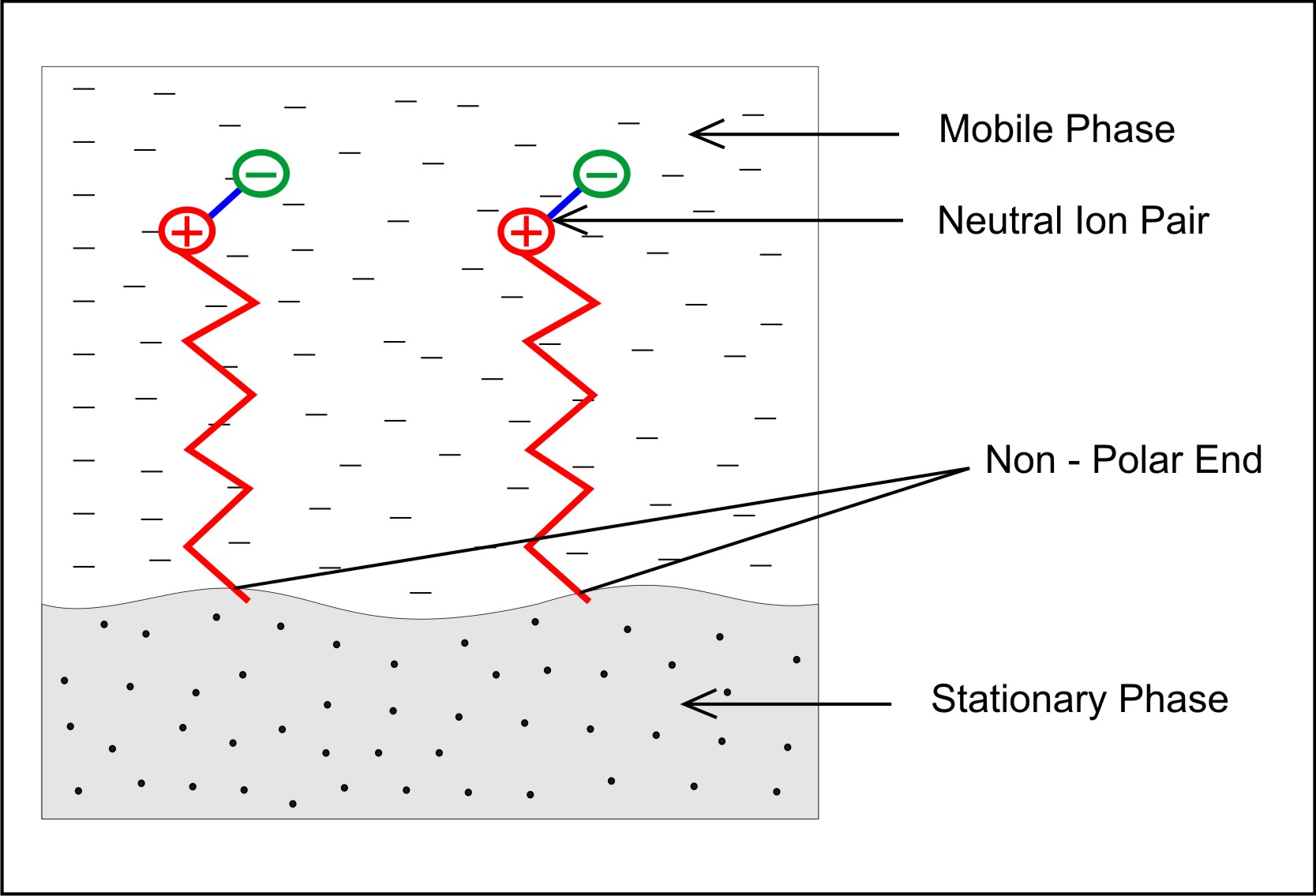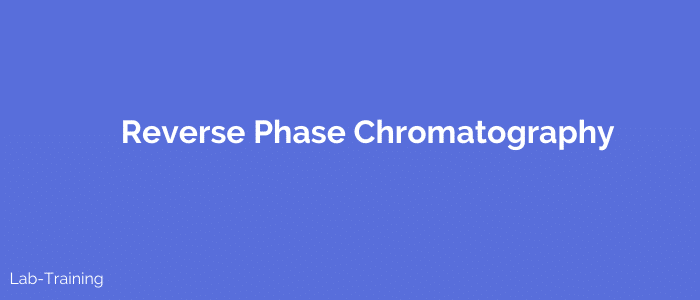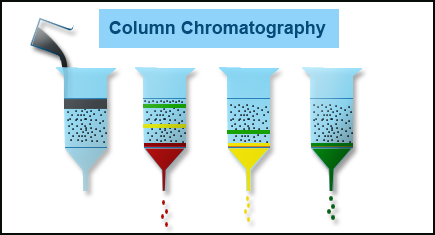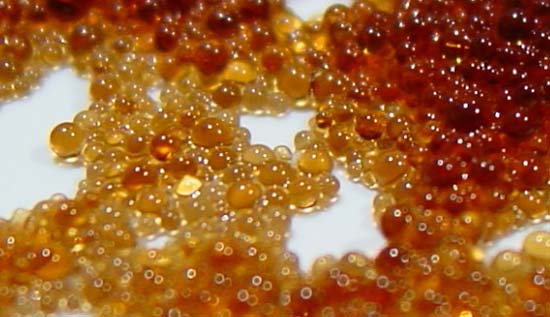Ion Pair Chromatography – a viable alternative for Separation of High Polarity molecules by Reverse Phase HPLC
Ion pair chromatography helps separate charged analytes using the popular reverse phase chromatography. Ion pair reagents enhance peak shape and retention time when modifying mobile phase ratios or changing stationary phase is not of much help.

The technique was developed by Dr. Gordon Shill in 1973. Ion paired reagent has an ionic terminal functional group at the end of a non polar chain. The reagent is added to the mobile phase and given sufficient time to equilibrate with the column. The non polar end of the chain is held strongly to the non- polar stationary phase whereas the charged end sticks out into the mobile phase. Ionic spieces of opposite charge in the mobile phase get immobilized by the charge on the reagent, resulting in neutral ion pairing between the sample molecule and the reagent. This helps in selective retention of charge to analytes in reverse phase HPLC.
Ion exchange chromatography had been in existence for several years but introduction of Ion pair chromatography offered several advantages:
- Simple preparation of buffers
- Wide choice of carbon chain lengths for improved retention and separation
- Significantly reduced separation time
- Simultaneous separation of both ionized and non-ionized molecules
- High reproducibility of results
- Improved peak shapes
Analysis of acidic samples is carried out by adding quatrenary ammonium salts such as tetrabutyl ammonium chloride to the mobile phase
\(RCOO ^- +R’_4N^+ \rightarrow RCOONR’_4\)
Similarly a negatively charged reagent such as an alkyl sulphonic acid can be used to selectively retain positively charged ionic bases
\(RNH_3^+ + R’SO_3^- \rightarrow RNH_3O_3S-R’\)
Precautions in use of Ion pair reagents :
- Ion pair reagents selected should lack absorbance in UV or fluorescence wavelength region selected for analysis
- Both mobile phase composition and temperature should be controlled precisely so gradient elution is ruled out when using ion pair reagents
- Allow sufficient time for the mobile phase to equilibrate with the column so that changes in mobile phase or temperature are minimized
- The column used with ion pair agents should be dedicated for such analysis as it is difficult to completely flush out ion pair reagents even after extensive flushing
In case you have experience with the use of Ion pair separations please leave your comments and share your experiences with others.




Its like you read my mind! You appear to know a lot about this, like you wrote the book in it or something.
I think that you can do with some pics to
drive the message home a bit, but other than that, this is great blog.
A fantastic read. I will certainly be back.
Your suggestions are always welcome